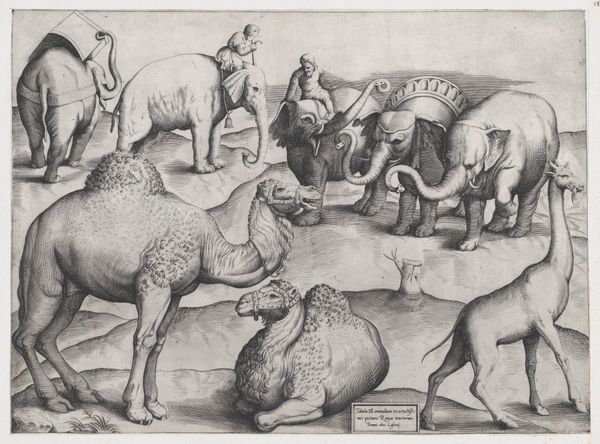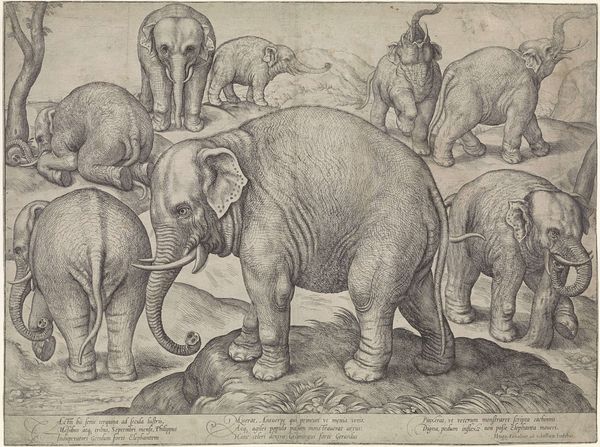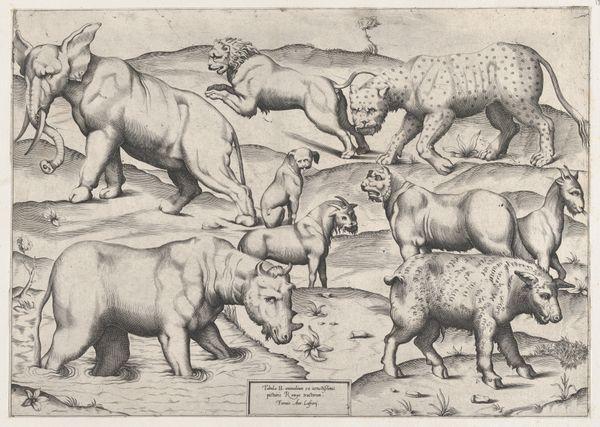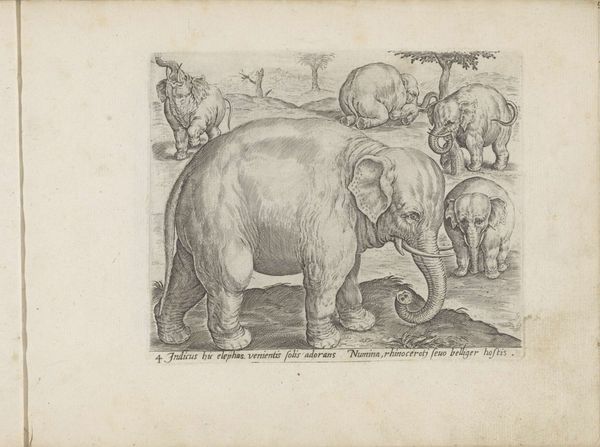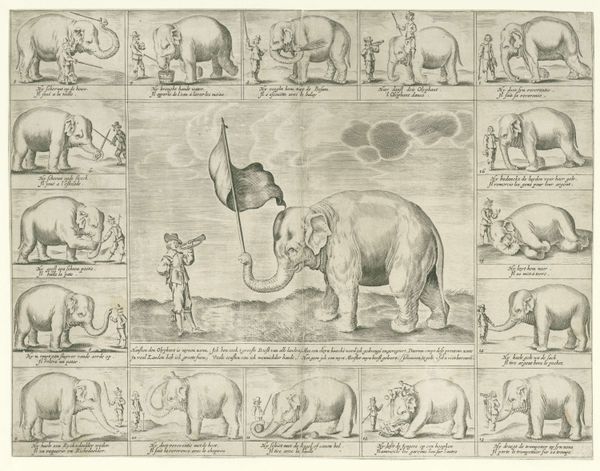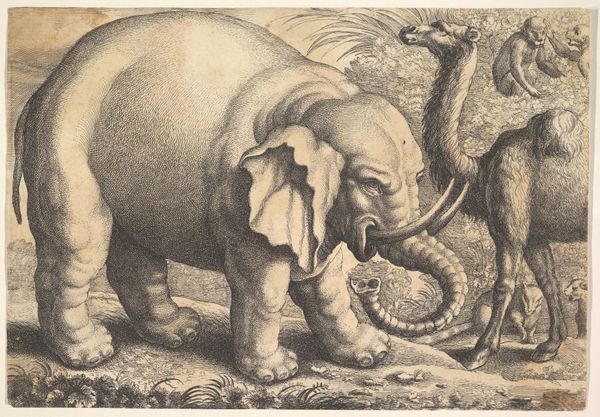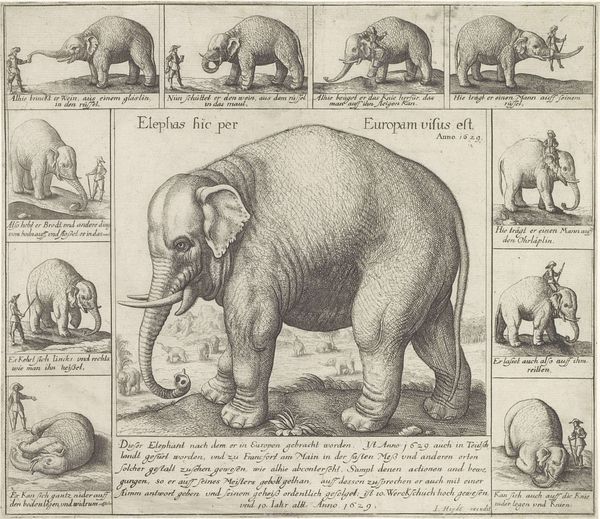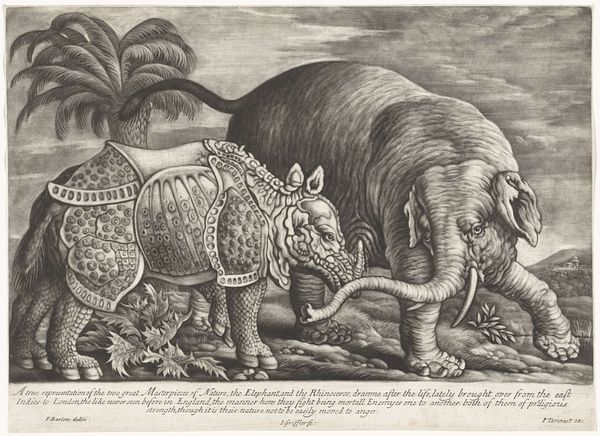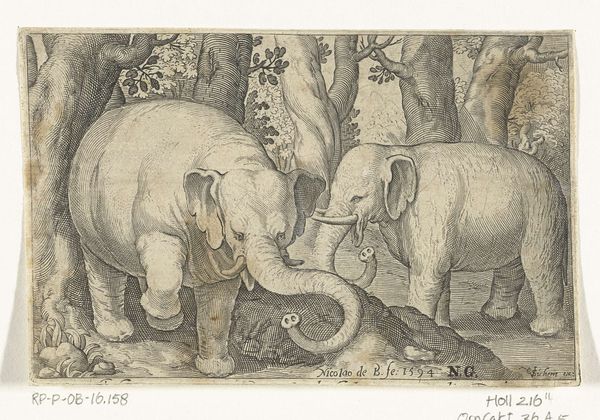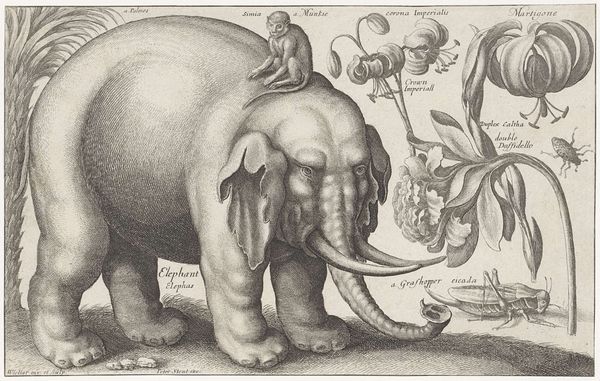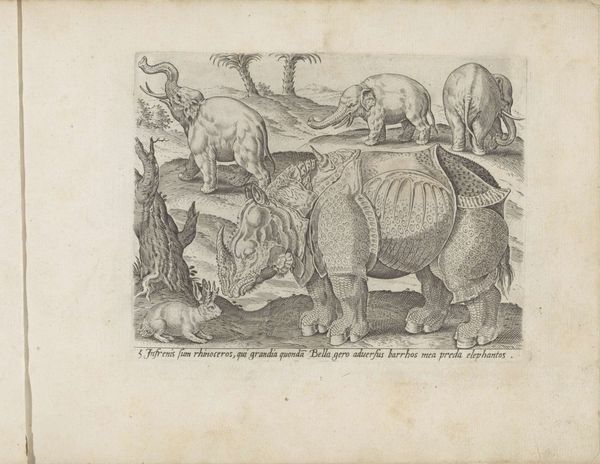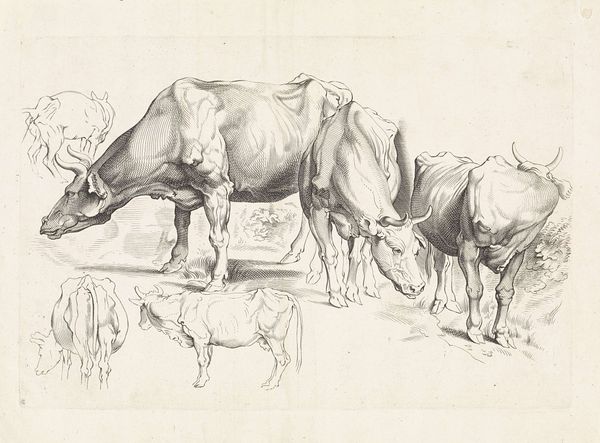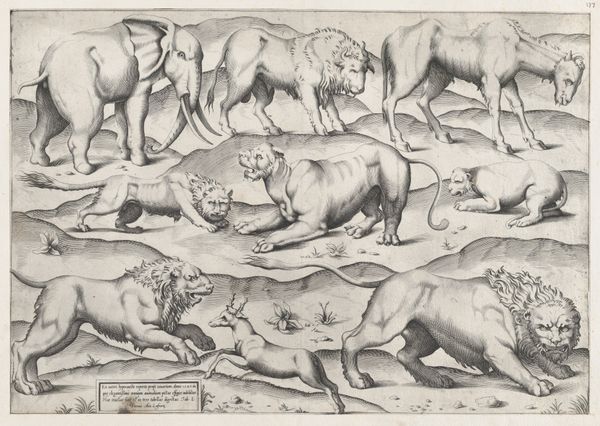
print, engraving
#
animal
# print
#
mannerism
#
history-painting
#
engraving
Dimensions: height 300 mm, width 409 mm
Copyright: Rijks Museum: Open Domain
Editor: Here we have "Acht dieren," or "Eight Animals," an engraving made sometime between 1547 and 1577 by Enea Vico, now at the Rijksmuseum. It's…striking. There's such an odd assembly of animals, almost like a parade. What strikes you about it? Curator: Well, immediately, it makes me think about the early modern period’s fascination with and misrepresentation of the "exotic." These animals—the elephants, camels, giraffe—weren’t common in Europe, and their depictions here, while detailed, carry a heavy weight of colonial perception. What does it mean to assemble these creatures together like this? Editor: Colonial perception? Curator: Absolutely. Think about where these animals come from, the regions European powers were beginning to exploit. The "history painting" aspect, as the museum tags suggest, isn't just about recording what these animals looked like. It's about power. The very act of categorizing and displaying these animals reflects a desire to dominate and control the natural world, doesn't it? Where do the human figures fit into that story for you? Editor: I hadn't considered that. The figures on the elephants… are they meant to show mastery over the animals? It's disturbing how nonchalant they seem. Curator: Precisely. This nonchalance naturalizes a power dynamic, disguising the exploitation inherent in their presence. Consider how this image might have been circulated, the narratives it reinforced about Europe's place in the world. What does this "mannerism" stylistic choice do to that messaging, I wonder? Editor: So, it's not just a picture of animals. It's a statement about control, knowledge, and the beginnings of colonial power dynamics being disseminated. It makes me think about how we continue to represent animals, and who gets to tell those stories. Thank you; I’ll never see these old prints the same way again. Curator: Indeed. And reflecting on those continuities is exactly why revisiting these works matters. There’s always another layer to uncover when we engage critically with art's complex history.
Comments
No comments
Be the first to comment and join the conversation on the ultimate creative platform.
